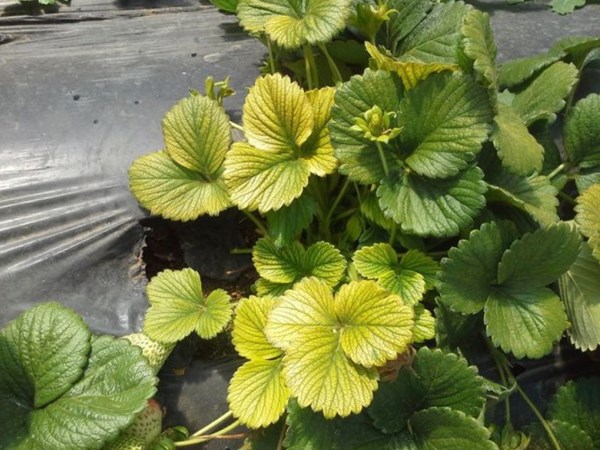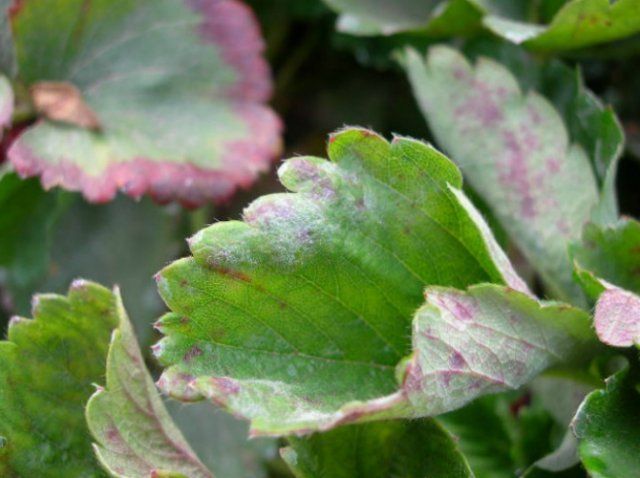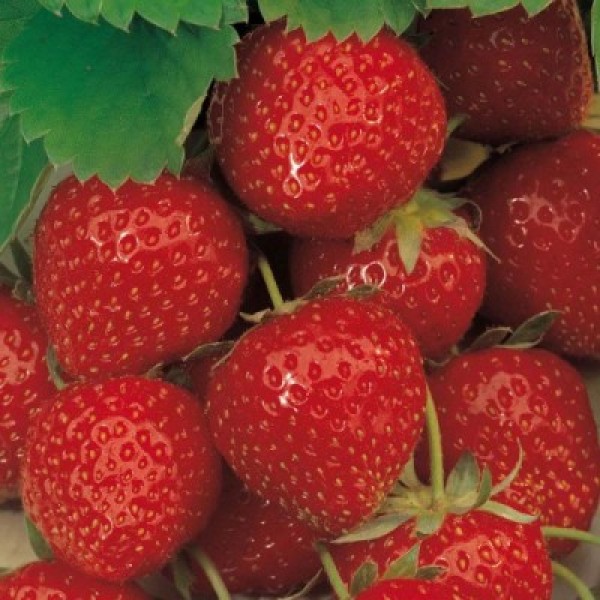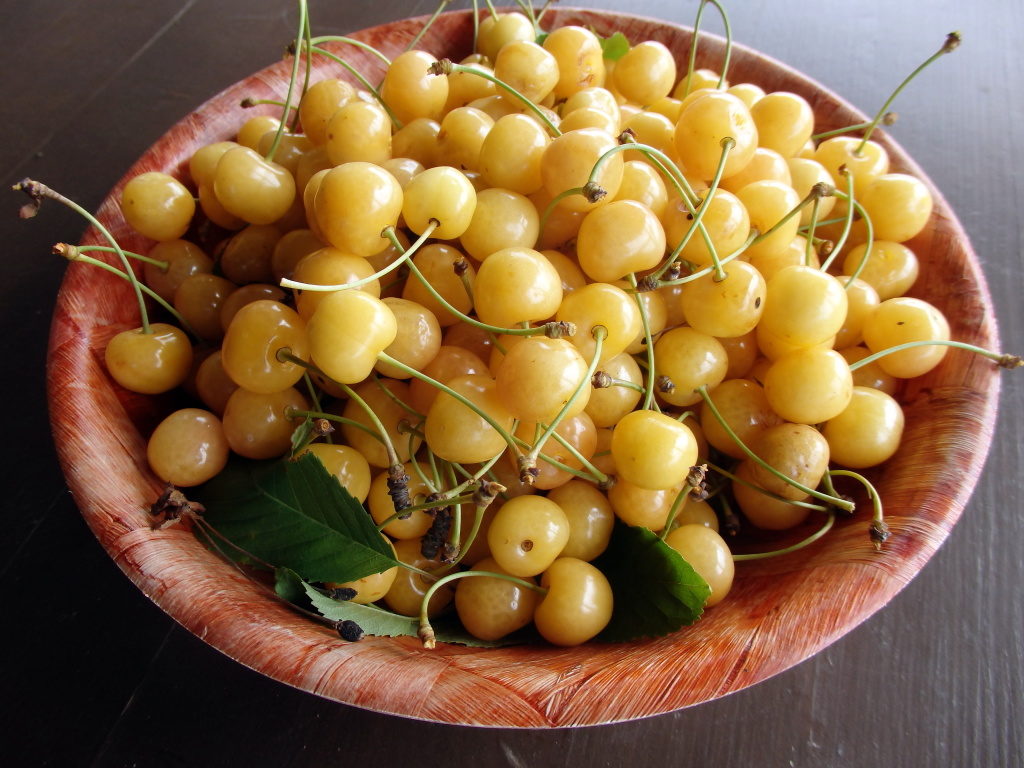Lambada is a Dutch variety for gourmets who adhere to the principle of less is more. This garden strawberry is famous not for its productivity, but for its taste. The berries are aromatic, sweet, even underripe, tastier than many varieties in full maturity. This berry has pluses and minuses; when growing, they will have to be taken into account.
Content
History and description of the variety
The Lambada strawberry was created in 1982. The variety is obtained as a result of cross-pollination of two Dutch hybrids: the first is Silvette x Holiday, the second is Karina x Primella. Of the seedlings that appeared, the largest-fruited were isolated.
Lambada bush is vigorous, with large emerald leaves, but not dense, open, which contributes to good aeration and lighting of the berries. Fruits are not affected by gray mold, but leaves can be affected by powdery mildew.
This strawberry is early, fruiting lasts about a month. The shape of the berries is conical, slightly elongated. Almost all fruits have a beautiful shape, double ones are extremely rare. The weight of one strawberry is about 30 g.
It tastes one of the best varieties, the berries are sweet, aromatic, but there are not many of them on one plant. Annual bushes throw out 1-2 peduncles, older ones - 3-5. The average productivity of the bush is 700–1000 g. However, Lambada grows well in thickening, so the efficiency of the garden increases, and the yield per 1 m² is not so low - about 6–8 kg.
Purpose of berries: fresh consumption and for processing into preserves and jams. The fruits are not suitable for freezing, transportation and storage, as they have a delicate consistency and easily lose their shape.
Advantages and disadvantages of Lambada in comparison with similar varieties
In general, we can conclude that it is easy to find a more productive variety than Lambada, but this strawberry has few competitors in taste. Also of great interest is its resistance to gray rot, even in thickened plantings. After all, this disease in a rainy summer destroys almost the entire strawberry crop. And if Lambada is really resistant to it, then this plus alone outweighs the main minus - low productivity. Let there be fewer berries, but they will all remain intact, wait for the owners, and will not rot.
Growing strawberries Lambada
Strawberries can be planted in spring, autumn, and with closed root systems in summer. But in terms of labor costs, autumn planting is preferable, the first harvest will not have to wait long. But those who planted in spring and summer will have to take care of the garden all season for the next year's harvest: feed, water, remove flower stalks. Indeed, in the year of planting strawberries, they are not supposed to have them, she must spend all her strength on rooting and building up the bush, otherwise it may die in winter. In addition, in the fall, the planting material is fresh, and in the spring these are last year's seedlings, which are stored in basements, refrigerators, pits, etc.
Video: planting strawberries with an open root system, mulching
Prepare the bed in advance: dig it up, having previously sprinkled 6–8 kg of humus or compost and 0.5 l of wood ash for each square meter. If the soil is acidic, add 300-400 g dolomite flour to the same area. The optimum acidity for Lambada is within 5.0–6.5. By the time of planting, the ground should sink. In whatever season you plant strawberries, choose a cloudy day or evening hours. Planting scheme 30x30-50 cm. Shade the bushes for the first 2 days, sprinkle in the heat.
When planting, keep your eyes on the growth point (heart), it should be at the level of the soil. If the bush is deepened, flower buds will not start, there will be no berries. And with a shallow planting, the upper part of the roots will be at the surface, the bush will be lethargic, if it survives until winter, it will die from frost.
Feed the bushes about a week after planting. Until mid-summer, and adult bushes, before the budding phase, need fertilizers containing mainly nitrogen. This element contributes to the rapid growth of green mass. In the second half of summer, under seedlings or from the moment of flowering under adult bushes, apply complex mixtures for strawberries with microelements, in autumn - phosphorus-potassium. Follow this pattern throughout the growing years. Fruiting bushes growing in one place for 2-3 years, feed more often - every 10 days, young bushes can be watered with fertilizers twice a month.
To prevent powdery mildew and other fungal diseases, spray strawberries in the spring, before flowering, and in the fall, after harvest, with fungicides. They cope well with fungi: HOM, Skor, Horus, Topaz. During flowering and fruiting, add Fitosporin (1-2 tablespoons of concentrate per 10 liters of water) to the irrigation water.
Watering should be infrequent, but regular and abundant - once a week, 3-4 liters under a bush. Under this condition, strawberries will develop powerful roots that can extract water from the depths.And with frequent watering, the roots are located superficially, in the heat the bushes wither, which affects the quality of the crop.
Strawberry care at the end of the season
Pay special attention to Lambada after harvest, in July-August. During this period, the bushes do not retire, on the contrary, the laying of flower buds of the next year begins, the roots actively grow and renew. Immediately after you pick off the last berries, cut off the old, coarse leaves, leave in each bush 3-5 of the youngest, with a still pale green color. Remove the stalks and mustache, of course. Mustache trimming should be a mandatory and ongoing procedure.

Each bush has old and young leaves, after harvest, remove all dark, coarse leaves, leave only light green
After pruning, the bushes need to quickly recover, for this, make a nitrogen fertilization. The simplest is urea (1 tbsp. L. Per bucket of water), you can pour it with infusion of nettle, bird droppings, mullein. In the same period, treat the strawberry bed from diseases and pests (Aktara, Aktellik, Karbofos). In September, when the bushes are already fully restored, pour them with a solution of superphosphate and any potassium salt, except for chlorine (1 tablespoon per 10 liters of water).
Video: processing strawberries after fruiting
And at the end of the season, do not stop watering, and in October, if the land is dry, do a charge, at a rate 1.5 times higher than usual. The moisture reserve is useful for strawberries for a quick start in spring. If in the growing region the temperature drops to -30 ° C in winter, be sure to take care of the shelter. When the daytime temperature reaches 0 ... +5 ° C, throw light and gnarled branches on the strawberries, cover with dry tops, hay, spruce branches, agrofibre, burlap. Do not cover when it is still raining, thaws alternate with frosts, strawberries will be in ice or windy dampness, they can rot, vanish, die.
Reviews about strawberries Lambada
I have a lambada, but the first year, has not yet borne fruit. Reviews are very good, sweet and large. I think if the seller is reliable, then take it.
We also have Lambada - a favorite. It was with difficulty that I managed to photograph a ripe berry - my men (husband and son) carry around the unripe one. When I begin to scold that they are picking up an unripe berry, they answer that it is tastier than all the other ripe ones that are unripe. And the aroma and sweetness are on top. The berry is large, but inferior in size to KE and Selva, and even more so in terms of yield. Although I found that in a rare planting it bears fruit much better than in a thickened one.
The most delicious berry on my site. Moreover, it is not the most transportable. A few hours after collection, it loses its presentation. Because of this, it is not suitable for the fresh market. I consider it the best variety for home consumption.
Lambada is an early strawberry with large and sweet berries. Due to its low yield, it is not worth making it the main variety, it is good as an addition to more productive ones. Despite the large bushes, they can be planted often, which saves the usable area of the site, making it more efficient. As for the care, it is standard: watering, feeding, shelter for the winter.




